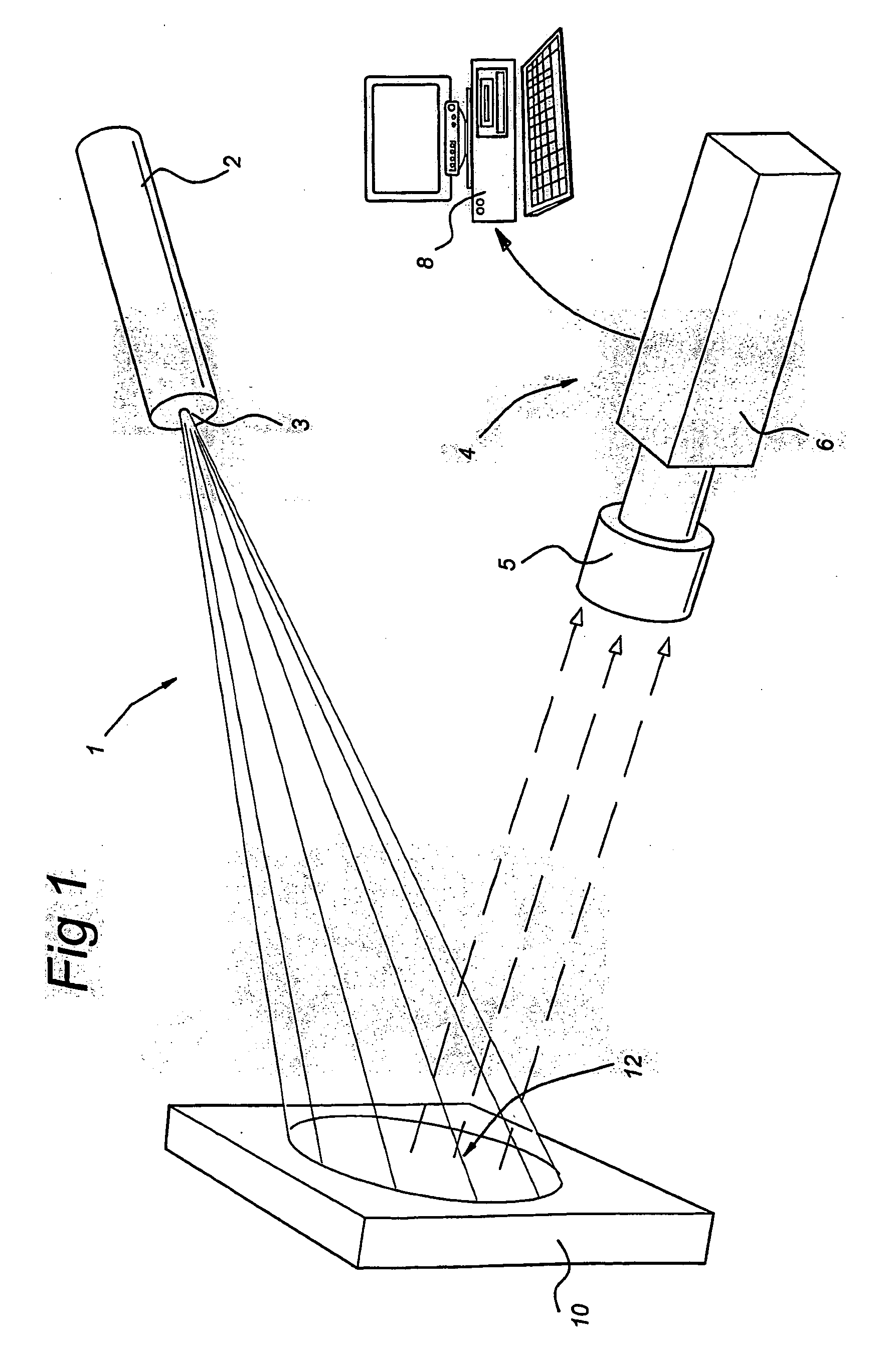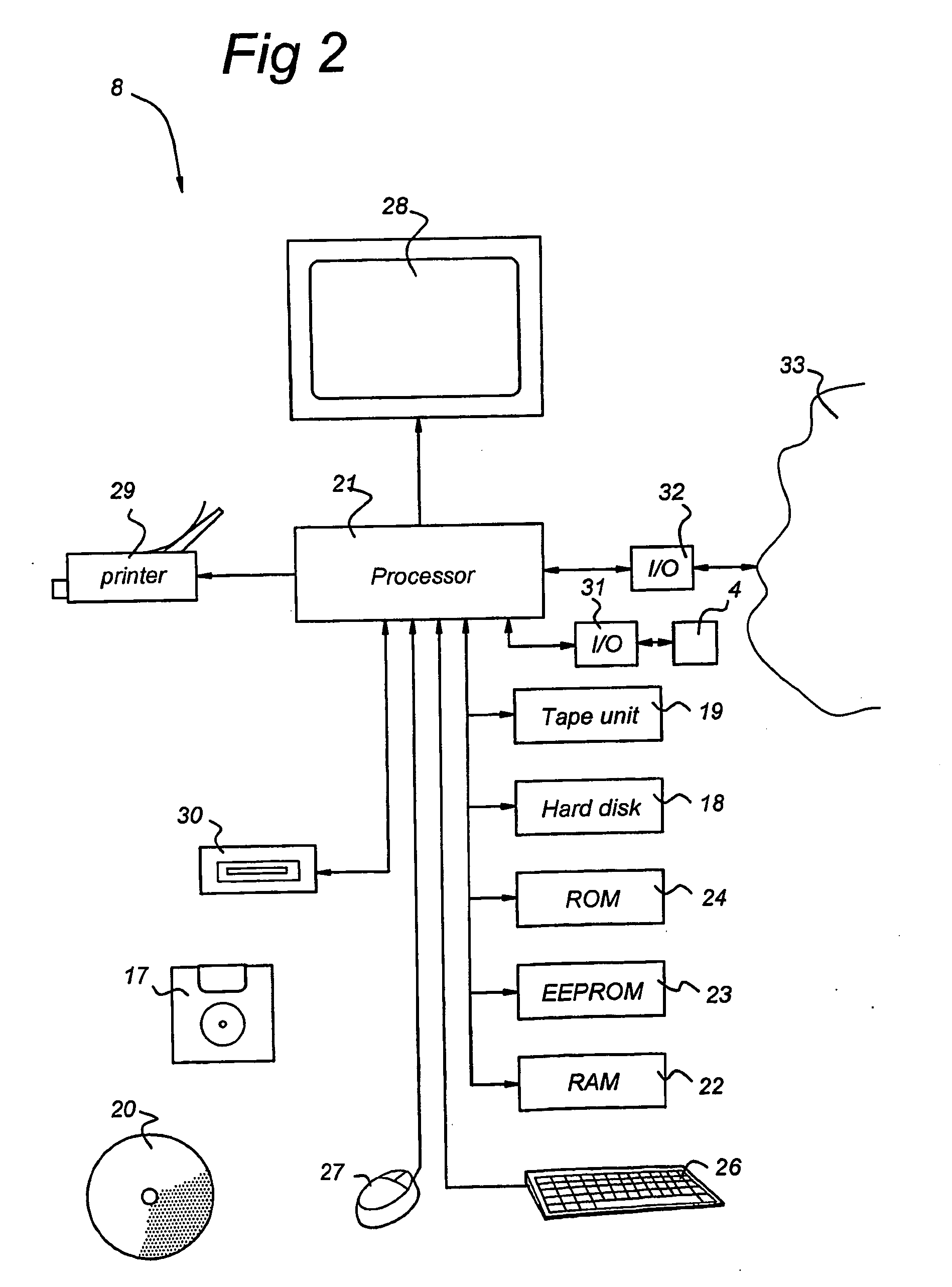Laser doppler perfusion imaging with a plurality of beams
a technology of laser doppler and perfusion imaging, applied in the direction of color/spectral property measurement, indication/recording movement, sensors, etc., can solve the problem that the speed of the system is not enough to resolve the fast changes in the doppler signal, and the scanning takes an appreciable time. problems, to achieve the effect of fast and reliable measurements and analysis
- Summary
- Abstract
- Description
- Claims
- Application Information
AI Technical Summary
Benefits of technology
Problems solved by technology
Method used
Image
Examples
Embodiment Construction
[0037] As an alternative for detectors applied in prior art Laser Doppler Perfusion Imaging systems, in the present invention a two-dimensional random access high pixel readout rate image sensor such as a CMOS image sensor is used. Those skilled in the art will recognise that any type of MOS-based sensor may be used as detector as well.
[0038] CMOS (Complementary Metal Oxide Semiconductor) image sensors progressively developed over the last few years. CMOS image sensor devices are in some way very similar to CCDs. Both technologies are based on photosensitive diodes or gates in silicon. In both solid state devices photons are converted into an electrical charge. The main difference between CMOS and CCD image sensors is basically, that a CMOS image sensor is a 2-D matrix of photodiodes, which can be addressed randomly at a high sampling rate (as described by B. Dierickx et al., in “Random addressable active pixel image sensors”, Proc. SPIE 2950, 2-7 (1996)), while in CCD sensors the ...
PUM
| Property | Measurement | Unit |
|---|---|---|
| distance | aaaaa | aaaaa |
| output power | aaaaa | aaaaa |
| wavelength | aaaaa | aaaaa |
Abstract
Description
Claims
Application Information
 Login to View More
Login to View More - R&D
- Intellectual Property
- Life Sciences
- Materials
- Tech Scout
- Unparalleled Data Quality
- Higher Quality Content
- 60% Fewer Hallucinations
Browse by: Latest US Patents, China's latest patents, Technical Efficacy Thesaurus, Application Domain, Technology Topic, Popular Technical Reports.
© 2025 PatSnap. All rights reserved.Legal|Privacy policy|Modern Slavery Act Transparency Statement|Sitemap|About US| Contact US: help@patsnap.com



